Asia-Pacific Food Hydrocolloids Market Size
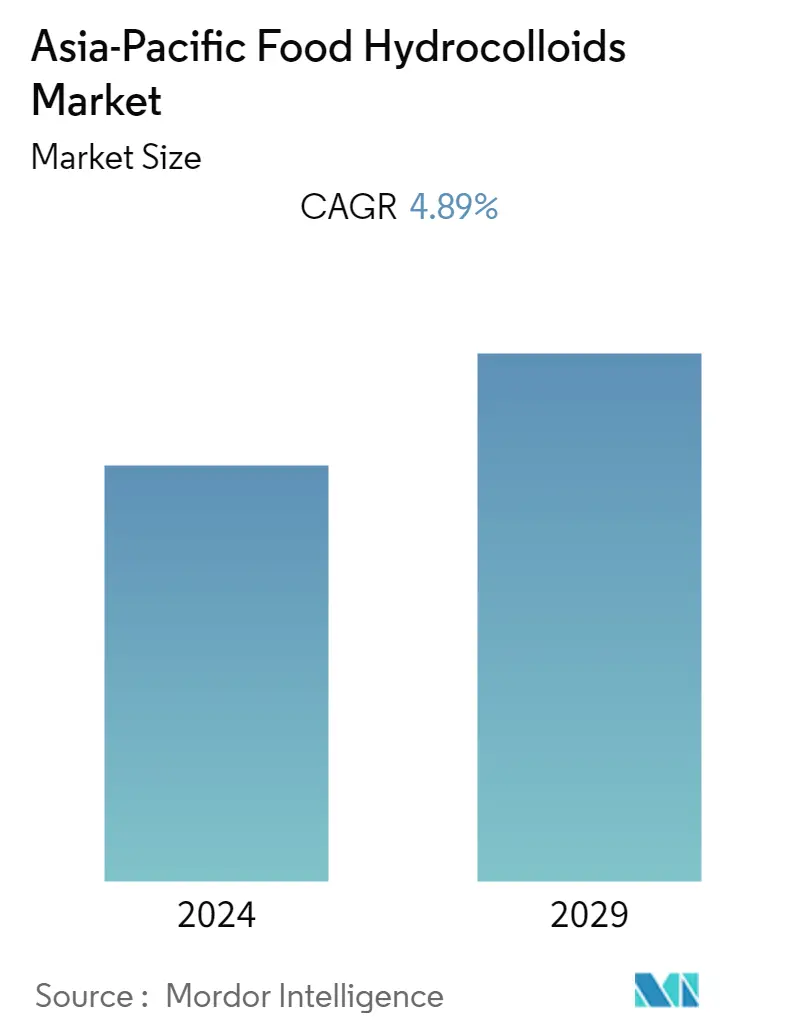
| Study Period | 2019 - 2029 |
| Base Year For Estimation | 2023 |
| Forecast Data Period | 2024 - 2029 |
| Historical Data Period | 2019 - 2022 |
| CAGR | 4.89 % |
| Market Concentration | Low |
Major Players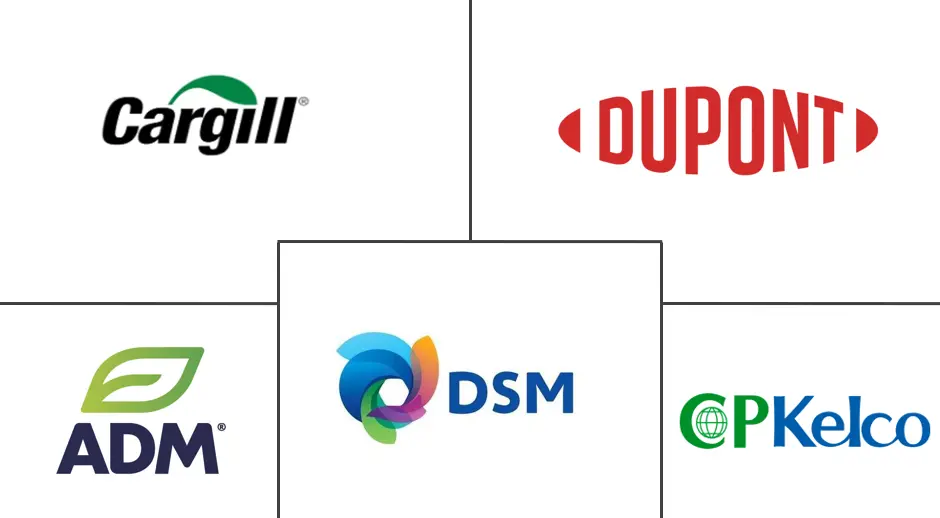
*Disclaimer: Major Players sorted in no particular order |
Asia-Pacific Food Hydrocolloids Market Analysis
Asia-Pacific food hydrocolloids market is projected to grow at a CAGR of 4.89% during the forecast period (2020-2025).
- Consumer preference for natural ingredients and the varied applications of hydrocolloids in the food and beverage industry are some of the reasons for the uptick in demand. The changing consumer demographics in terms of lifestyle changes and growing working population, resulting in consumer demand for convenience and processed food, especially among the emerging nations, is an opportunity for manufacturers to adopt hydrocolloids in the region.
- Furthermore, key players in the market are continuously focused on R&D to provide innovative products to cater to their growing demand in processed & convenience foods.
- However, the market is mainly constrained by demand and supply imbalances. Seasonal changes cause volatility in raw material pricing, thus raising costs for manufacturers. Despite restrains, the market sees huge potential for growth in Asia-Pacific region,.
Asia-Pacific Food Hydrocolloids Market Trends
This section covers the major market trends shaping the APAC Food Hydrocolloids Market according to our research experts:
Increasing Application In Beverage Sector
Acidified protein drinks, such as fruit juice and milk- or yogurt-based beverages, alternative milk, and juice drinks, carbonated soft drinks, energy drinks, and others tend to be the highest users of hydrocolloids in the region. Some of the popular hydrocolloids with increasing applications in the beverage sector include gellan gum, xanthan, and pectin. In developing countries like India and other South-East Asian countries, the fast-growing population brings a continuing demand for soft drinks, especially as the climate is quite hot, which in turn is propelling the growth market studied at a faster pace. Moreover, the rising market of overall ready-to-drink beverage across the region is likely to boost the demand for food hydrocolloids to be used in beverage applications across the region.
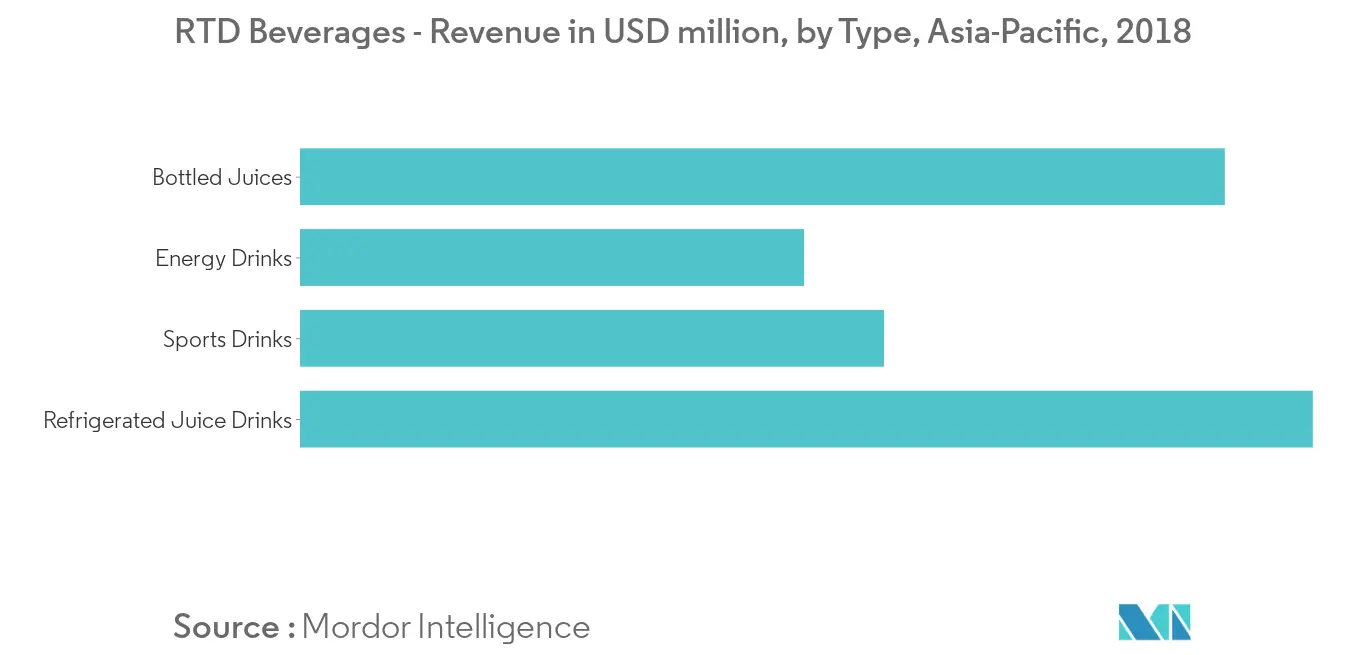
Regional Overview of Asia-Pacific Food Hydrocolloids Market
Changing lifestyles of consumers and increasing awareness of nutritional food is driving the hydrocolloid market in developing countries, such as India and China. China dominates the hydrocolloids market, followed by India. The increasing population of these regions is driving the market. While the Japanese market for hydrocolloids is increasing due to the increasing demand for convenience food confectioneries, Australian consumers are demanding natural additives and the use of natural hydrocolloids. Indonesia and Thailand are the major sources of seaweed extracts, and unseasonal changes are resulting in demand-supply bottlenecks as a hydrocolloid supply chain depends on the sourcing of raw materials in its manufacturing process. Thus, Asia-Pacific depicts to achieve potential growth for the food hydrocolloids market during the forecast period (2020-2025).
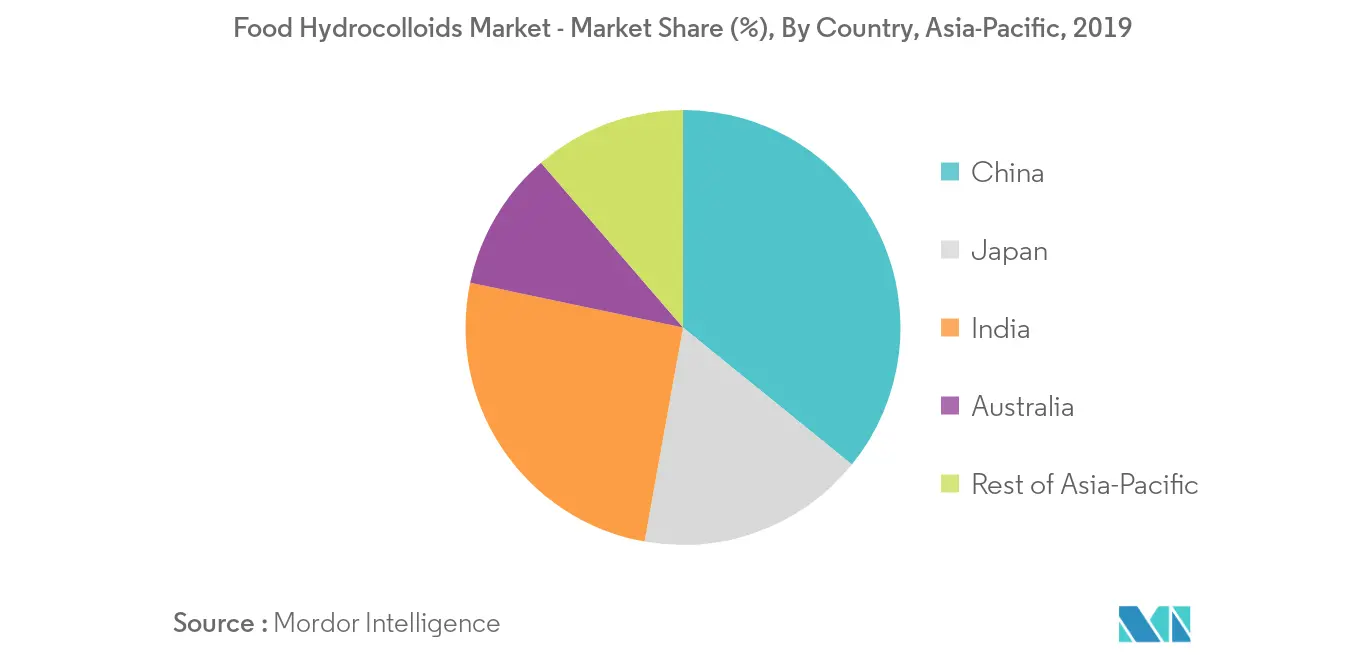
Asia-Pacific Food Hydrocolloids Industry Overview
The Africa food hydrocolloids market is fragmented and includes several global and domestic food ingredient companies. Some of the key market players include Cargill, Incorporated, Koninklijke DSM N.V., Cp Kelco, Hawkins Watts Australia PTY Ltd., Archer Daniels Midland Company, DuPont de Nemours, Inc., and others.
Asia-Pacific Food Hydrocolloids Market Leaders
-
Cargill, Incorporated
-
Koninklijke DSM N.V.
-
Cp Kelco
-
Archer Daniels Midland Company
-
DuPont de Nemours, Inc.
*Disclaimer: Major Players sorted in no particular order
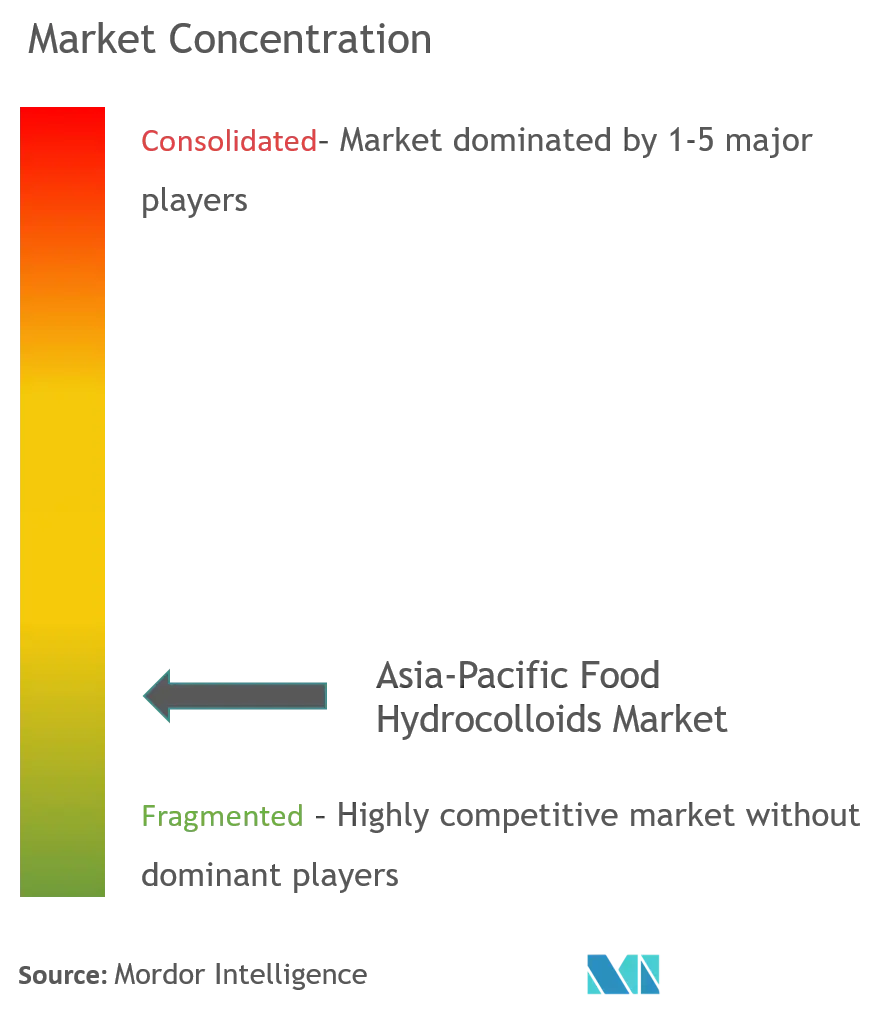
Asia-Pacific Food Hydrocolloids Market Report - Table of Contents
-
1. INTRODUCTION
-
1.1 Study Deliverables
-
1.2 Study Assumptions
-
1.3 Scope of the Study
-
-
2. RESEARCH METHODOLOGY
-
3. EXECUTIVE SUMMARY
-
4. MARKET DYNAMICS
-
4.1 Market Drivers
-
4.2 Market Restraints
-
4.3 Porter's Five Force Analysis
-
4.3.1 Threat of New Entrants
-
4.3.2 Bargaining Power of Buyers/Consumers
-
4.3.3 Bargaining Power of Suppliers
-
4.3.4 Threat of Substitute Products
-
4.3.5 Intensity of Competitive Rivalry
-
-
-
5. MARKET SEGMENTATION
-
5.1 By Type
-
5.1.1 Gelatin Gum
-
5.1.2 Pectin
-
5.1.3 Xanthan Gum
-
5.1.4 Other Types
-
-
5.2 By Application
-
5.2.1 Dairy and Frozen Products
-
5.2.2 Bakery and Confectionery
-
5.2.3 Beverages
-
5.2.4 Meat and Seafood Products
-
5.2.5 Oils and Fats
-
5.2.6 Other Applications
-
-
5.3 By Geography
-
5.3.1 China
-
5.3.2 Japan
-
5.3.3 India
-
5.3.4 Austalia
-
5.3.5 Rest of Asia-Pacific
-
-
-
6. COMPETITIVE LANDSCAPE
-
6.1 Most Active Companies
-
6.2 Most Adopted Strategies
-
6.3 Market Share Analysis
-
6.4 Company Profiles
-
6.4.1 Cargill, Incorporated
-
6.4.2 Koninklijke DSM N.V.
-
6.4.3 Cp Kelco
-
6.4.4 Hawkins Watts Australia PTY Ltd.
-
6.4.5 Archer Daniels Midland Company
-
6.4.6 DuPont de Nemours, Inc.
-
6.4.7 Zhejiang Top Hydrocolliods Co., Ltd.
-
6.4.8 Sheli Limited & Kam Yuen International Company
-
- *List Not Exhaustive
-
-
7. MARKET OPPORTUNITIES AND FUTURE TRENDS
Asia-Pacific Food Hydrocolloids Industry Segmentation
The Asia-Pacific food hydrocolloids market is segmented by type, application, and geography. Based on type, the market has been further segmented into gelatin gum, pectin, xanthan gum, and other types, while based on application, it has been segmented into dairy and frozen products, bakery and confectionery, beverages, meat and seafood products, oils and fats, and other applications. By geography, the market is segmented under China, Japan, India, Australia, and Rest of Asia-Pacific.
| By Type | |
| Gelatin Gum | |
| Pectin | |
| Xanthan Gum | |
| Other Types |
| By Application | |
| Dairy and Frozen Products | |
| Bakery and Confectionery | |
| Beverages | |
| Meat and Seafood Products | |
| Oils and Fats | |
| Other Applications |
| By Geography | |
| China | |
| Japan | |
| India | |
| Austalia | |
| Rest of Asia-Pacific |
Asia-Pacific Food Hydrocolloids Market Research FAQs
What is the current Asia-Pacific Food Hydrocolloids Market size?
The Asia-Pacific Food Hydrocolloids Market is projected to register a CAGR of 4.89% during the forecast period (2024-2029)
Who are the key players in Asia-Pacific Food Hydrocolloids Market?
Cargill, Incorporated, Koninklijke DSM N.V., Cp Kelco, Archer Daniels Midland Company and DuPont de Nemours, Inc. are the major companies operating in the Asia-Pacific Food Hydrocolloids Market.
What years does this Asia-Pacific Food Hydrocolloids Market cover?
The report covers the Asia-Pacific Food Hydrocolloids Market historical market size for years: 2019, 2020, 2021, 2022 and 2023. The report also forecasts the Asia-Pacific Food Hydrocolloids Market size for years: 2024, 2025, 2026, 2027, 2028 and 2029.
APAC Food Hydrocolloids Industry Report
Statistics for the 2024 APAC Food Hydrocolloids market share, size and revenue growth rate, created by ����vlog��ý™ Industry Reports. APAC Food Hydrocolloids analysis includes a market forecast outlook 2029 and historical overview. Get a sample of this industry analysis as a free report PDF download.



